Chris Jones's Blog, page 9
November 28, 2019
Stephen King and George RR Martin in conversation… Seriously!
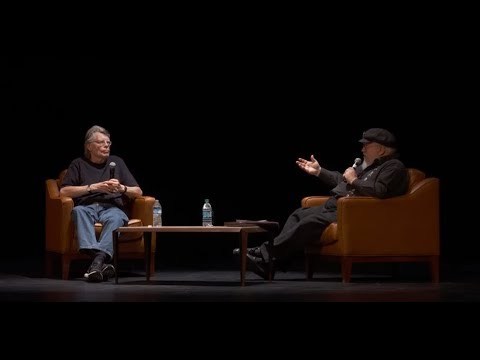
Stop what you are doing. Switch off Facebook and Twitter. Turn off your phone. And play…
We also this video converted into a podcast below for those on the move.
Onwards and upwards!
Chris Jones
My movies www.LivingSpiritGroup.com
My Facebook www.Facebook.com/ChrisJonesFilmmaker
My Twitter @LivingSpiritPix
Sign up to my mailing list for updates on events, books and free film making tools
November 22, 2019
What Can We Learn From SciFi Apocalypse Movie ‘Invasion Planet Earth’? Watch the Comicon Main Stage panel with cast and crew
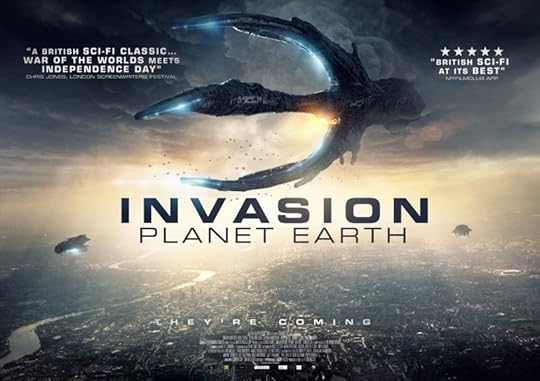
Filmmaking is a team effort… but it also takes individual leadership, hustle, passion, vision, tenacity, grit and perhaps pathological optimism.
Most filmmakers think they have. Not all do. But Simon Cox does.
Simon spent nearly two decades making his passion project, a movie postcard back to the kid inside him, the one who fell in love with movies and big concept TV of the seventies. It’s called ‘Invasion Planet Earth’. It’s BIG!
I was involved only in an adjacent way, a close friend, sometimes adviser, often confidant… but I did see it through from concept to today. And what a ride it’s been.
I saw it grow to a ten million dollar epic, collapse into a heap, get reborn into an even bigger project, before again collapsing… Promises were broken, funding never came through… It was heart breaking.
Having had enough of OTHER people controlling his destiny, Simon drew a line in the sand and said ‘Enough… It’s going to get MY way…’
And so, the decades long production process began.
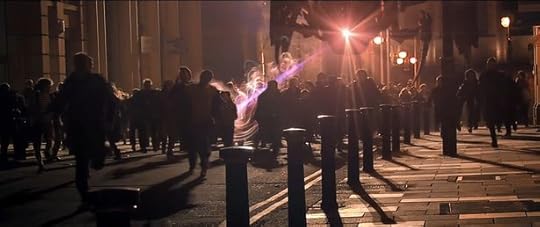
Mostly it took place in small industrial units, garages and living rooms. Occasionally on Birmingham streets. And green screen, wow SO MUCH green screen.
Family and friends and anyone crazy enough to follow the maniacal vision all buckled up for the ride. To give you perspective, his daughters are in the film, playing different characters. They grew SO much during the years of filming, that they looked totally different!
On long drives I would chat with Simon as he watched the blue render bar of After Effects nudge up 1% every half hour… Simon had to learn to do his own VFX when he had no budget. Plans were laid for distribution and sales. Plots were hatched.
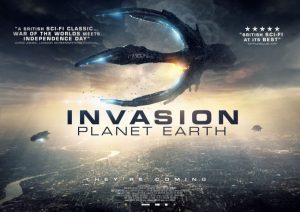 And finally now, the film is in cinemas for ONE DAY only, on December 5th. Check out the listings on myvue.com and PLEASE go see it on that one day. It will NOT be playing on December the 6th.
And finally now, the film is in cinemas for ONE DAY only, on December 5th. Check out the listings on myvue.com and PLEASE go see it on that one day. It will NOT be playing on December the 6th.
So… if you want to see what a decades worth of grit, passion and leadership can achieve, with little and often no resources above personal charisma and hustle… Do yourself a favour and go see ‘Invasion Planet Earth’. I plan to be at the Shepherds Bush screening so look out for me there.
Onwards and upwards!
Chris Jones
My movies www.LivingSpiritGroup.com
My Facebook www.Facebook.com/ChrisJonesFilmmaker
My Twitter @LivingSpiritPix
Sign up to my mailing list for updates on events, books and free film making tools
October 11, 2019
Joker… Does YOUR antagonist go on their heros journey into hell?
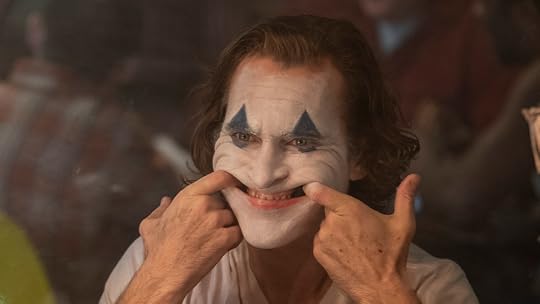
** SPOILER FREE **
I rather loved Joker. The design. The universe. The cinematography. The story arc. The performance. My god the performance. The soundscape and music score. Love the music by Hildur Guðnadóttir. LOVE (one track below).
So, some story observations that make it fascinating for me.
The Joker is in almost EVERY scene
This is pretty unusual as most filmmakers and actors cannot pull off such intense optics and story pressure. It sounds easy. It’s not. I can’t think of many actors who could not just keep our attention for the duration, but who could also draw us in deeper and deeper in both empathy and sympathy as well as, ultimately, horror.
Choosing to follow one character is very challenging, but if you can pull it off, it’s very powerful storytelling.

Who does the Joker stand for? Who or what do your characters stand for? And do they change?
As human beings, we all stand for something. At the very centre we stand for ourselves. If we stand for no one else, we are likely a sociopath or a psychopath and the foundations for an excellent villain.
If we stand for ourselves and our families, that’s better, but it’s still very insular and dangerous.
Maybe our stand is for the local community, the village. Now it’s tribal. This is where I would suggest politics are today. Tribal.
Or maybe it’s bigger: a stand for the country, which is where politics THINKS it is, but it isn’t.
Or maybe it’s a stand for everyone?
As an audience, we LOVE watching characters moving up or down across these thresholds… Usually for a protagonist, it’s UPWARD, perhaps thinking only of the self at start, but eventually caring for the community… Think Clint Eastwood in Gran Torino for instance – he hates pretty much everyone but ascends to love the ‘people’ he once hated.
We can keep stepping up over these thresholds and the greater the leap, the greater the satisfaction.
We love this growth and in some cases it leads to deep redemption.
‘It is a far, far better thing that I do, than I have ever done’ says Carton in the closing lines of A Tale Of Two Cities by Charles Dickens, as he nobly gives his life.
The more stages a character moves between, so long as it’s truthful and not a gimmick, the more satisfying we find it as an audience.
Joker is a descent.
He cares about his mother. He cares about the kids he performs for as a clown. He cares about his co-workers, though his descent is illustrated in one key scene in this regard. He cares for the city and the people in it. He cares for the woman and child down the hall. He cares very deeply for her.
And then in his descent, finally… he doesn’t care.
It feels truthful and like watching a car crash in slow motion. It lingers as it shines a light into the darkness of our own immature sense of injustice and rage.
Maximus in Gladiator stands for Rome, then no one as he descends, before ascending once more to stand for everyone. Getting your characters to cross thresholds of ‘who they stand for’ will allow them to ‘change’ without forcing the change.
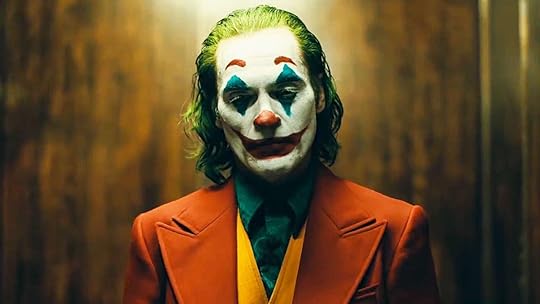
The Hero’s Journey in the descent… Does your nemesis follow mirrored story beats with the protagonist?
One topic I will be covering at the upcoming LSFAccelerate is the character arc of the nemesis. The journey of your villain.
Exploring story models in the ‘opposite’, the Hero’s Journey in the descent if you will, we can see how with every single step the protagonist takes, the antagonist can (and should) take similar steps too. They may not be on the page, but they should be in the story universe.
One strives upward (protagonist) while the other descends ever deeper (antagonist).
It’s fascinating because we spend sooooo much time on our protagonists that we often allow our antagonists to occupy less story space, and if we are not careful, they can become caricatures. Then it’s game over.
[powr-banner-slider id=cfef3677_1546443649]
The Joker is an antagonist in the Batman universe, but is played as a protagonist in the Joker universe.
This is one reason I suspect that we see such a backlash from the media.
We just don’t like feeling empathy for evil. The genius was in allowing us to connect with a human being, then pushing them so hard that they snap – asking US how much we could take before WE snap.
It’s unsettling and complicated. And a breath of fresh air for superhero movies.
Whoever wins your story, it should feel like they JUST beat the other. Consider the journey of King Kong if HE were the protagonist of the story. Ordinary World, Call To Adventure… Seizing the Sword, The Resurrection…
Like the Joker, we find it hard not to feel for him and that causes some conflict within us. Great storytelling allows us insight into the villain in such a way that we can feel for them, even if it’s uncomfortable.
Put as much energy and time into plotting your story arc for the villain as you do for your protagonist.
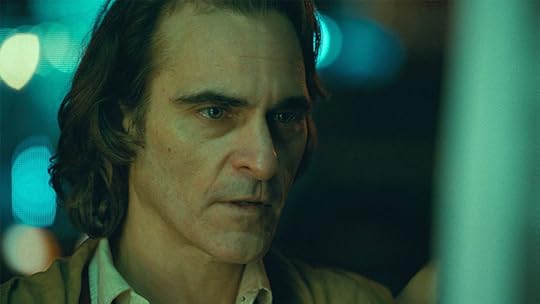
What can we learn?
Play our antagonists as human beings as well as opposing forces in our stories. Give them depth and vulnerability, love, passion, pain, courage… Make them REAL. And perhaps, just perhaps, the villain in your narrative has a more compelling story to tell than you heroine. Maybe consider telling THAT story instead?
And remember, if you want TWO days of amazing London Screenwriters’ Festival sessions, access to NINE years of video sessions from past festivals AND the opportunity to pitch your projects at the PitchFest, then grab you pass for £125 HERE.
Onwards and upwards!
Chris Jones
My movies www.LivingSpiritGroup.com
My Facebook www.Facebook.com/ChrisJonesFilmmaker
My Twitter @LivingSpiritPix
Sign up to my mailing list for updates on events, books and free film making tools
October 1, 2019
Walking on Fire by Shona… A personal journey to rediscovering ‘strength, grit and determination’
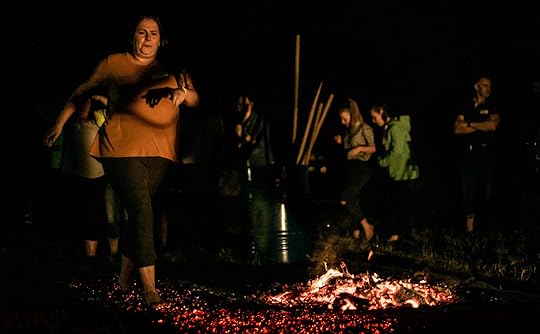
When parents at the school gates first started talking about the charity fire walk that was coming up later in the month, I didn’t think too much about it. It seemed like a great idea, but that’s as far as it went. I thought it would be a nice idea to go along as a family, to show our support – but then reality kicked in and I knew that ‘mum duties’ would probably take over and I’d end up not making it, and just hearing about it afterwards.
It was Wednesday evening, three sleeps until the event.
On the school bulletin, more and more information was coming in, including a list of names of the people taking part. I started to feel excited about it, I was definitely going to go and watch it, I thought. I started to imagine what it would be like, standing there in the crowd, the smell of the hot coals, the crackling sounds from the fire and the buzz of the atmosphere.
That evening, lying in bed, I knew I needed to go to sleep but I just couldn’t switch off. I started to realise that I hadn’t felt this excitement about anything for a while either. Something was telling me I needed to go for it. I knew that this challenge was something I had to do. I turned over to my partner, Jeff, and said: “I think I want to do the fire walk.” I had no idea what his reaction would be.
“Yeah why not?” he said. “Go for it.” Perhaps I’d been hoping to be talked out of it or reminded we had other plans – but no. Of course, the doubts soon crept in – could I actually do this? I couldn’t possibly? The kids would need me. I haven’t got time. Despite all this raging around my head, something made me say: “STOP. I am going to do this. I’m doing it for me. I’m doing it for my daughters. We’ll find a way.” Somehow, I just knew that this would help me move forward from this horrendous painful journey I had been going through.
Right there, at 10.30pm, I messaged the organiser and asked if it was too late to join. Within minutes she had replied, saying there was space and sending all of the info. I quickly signed up before I talked myself out of it.
All of a sudden, I had this feeling of empowerment and control, something I haven’t had in a while. I knew that I could do something for me, something to make me proud of who I am. I could do something for my daughter’s school, and more importantly for my daughter. This was it. This was perfect. I could do something for both of us.
I imagined what it would feel like to walk over those hot coals – the pain didn’t bother me at all, I was focused on the end result and how fantastic I would feel. The happiness, the joy, the fun, the laughter – that genuine feeling that I’ve not felt in so long. I just wanted to feel it straight away.
Saturday quickly arrived, I couldn’t wait to get started. I was excited, but some nerves started to kick in. Would it be all I had hoped for? How would I cope under pressure? Would I cope at all? More people entered the room, familiar faces appeared, and I could feel their nerves. I started to doubt if I should even be here. I was worried it might be too much for me.
It was too late to back down now though. I was in the room.
Chris, who ran the fire walk training, introduced himself and the intense music started playing. Chris explained that you can either fight this experience, or embrace it – all of it, from the introductory talk and training, to the fire walk itself – we could get as much out of it as we gave in to it. I felt ready to go with it and take whatever was coming my way. The hugging strangers and dancing was an odd one, but I was here to embrace it, and that’s what I did.
We focused on what was weighing us down in life and what was holding us back, stopping us from being who we wanted to be. We thought about what life would look like if we let ourselves continue in this way. I was listening to him, gripped. My heart rate was up, my breathing had increased. I felt calm and comfortable, and then as if my heart was going to jump out of my chest.
I kept on thinking and about how postnatal depression was taking over my life, my children’s lives, my career, my ability to be the mother I so desperately wanted to be.
Emotions were high, I could feel it in the room – tears, laughter, concentration, support, encouragement and a place of safety.
Part of our training was to walk across a pile of broken glass to prepare us for the fire. We each took a piece of broken glass, wrote on it what we feared most in life and threw it onto the pile. Then we stepped out across it. I walked with purpose, and it felt so empowering. I had just walked over glass, no cuts, no pain just the knowledge that I was walking over this fear and it wouldn’t take hold of me.
As the moment to do the firewalk arrived, I felt like I was ready to take on anything. I was going to do this. Outside, it was dark. I was squeezing my partner’s hand so tight, I felt vulnerable, emotional, tearful.
Before stepping onto the fire we had to visualise the person we wanted to be from this moment onwards, and to give them a superhero name that meant something to us. These names were not going to be disclosed until the very moment we took our place and walked across the fire. Then we had to shout them out loud, into the night.
This was so hard.
I knew what I wanted to be, I knew I had to be true to myself but it meant sharing my battle with post-natal depression with others. I wanted to get over my fear of letting others in and keeping everything so private, but this was the hardest thing of all for me.
We were in a line, and it was soon going to be my turn. I was listening to all the powerful names others had proudly shouted – Communicator, Warrior Queen, Lioness. The vision of that confident lioness striding over those coals was so powerful.
It was my turn, I took my place, I could feel the heat on my legs, I could hear the cheers and the children shouting.
“Are you ready?” Chris shouted from the other end of the hot coals.
No. I wasn’t ready. I could feel myself crumbling, the emotions taking over. “Yes,” I half-heartedly replied.
Then, the moment I feared the most came. “What is your name?” asked Chris.
And, I couldn’t say it, I froze.
I told myself that I wasn’t strong enough to take control of this illness, that I couldn’t look weak, couldn’t let everyone in. My vulnerability would be exposed and there would be no going back.
And yet, I could hear and feel so clearly the encouragement from others, including those closest to me. But I felt out of control, held in place by my fear.
Chris shouted to me, across the fire, made me look up and forward. He made me feel strong again. “Channel that wonder woman that you really are” he said.
That was it. Suddenly it made sense. Who I really am – not who I’ve been the past two years, but who I really am.
“Tell me, are you ready?” Chris said.
“YES,” I shouted. Because, I was, so ready
Tell me, what’s your name?” asked Chris.
“PND WARRIOR” I shouted, with meaning
And I walked over those coals – crushing all the crap that had been thrown at me since the birth of my second child. And with every step I knew, it was not taking over my life anymore. The journey starts now, this invisible illness is being kept at bay. I will not let it take control and rip me apart again. And I will never return to the person I was before.
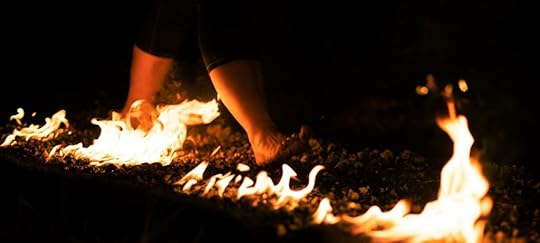
I didn’t feel the heat of the coals, just the crunching underfoot. I was getting closer to the end, to the feeling of relief, to a weight being lifted. That was it. I did it. I was back in control of me.
Chris said that for most people, the most memorable part of the whole firewalk will be the training. And he was right. Through this experience, I was able to find the strength, grit and determination that’s been hiding inside me, and use it to visualise what I wanted my life to be.
The moment I stepped off those coals was so overwhelming. It was truly a new start. I held onto Chris’ arms at the end, tears rushed down my face. The relief, pride. I had done something for me, to help me move forward in a positive way.

It made me realise that I’m stronger than I thought I was.
This depression, that so nearly took my life from me and my children, had been stamped into those coals and burnt away forever.
Shona,
Firewalker and PND Warrior
Note from Chris… If you resonate with Shona and her powerful truth and courage, throw a fiver into the campaign for her kids, and all the kids at the school here… http://tiny.cc/miserden
September 25, 2019
They Are Called Fire Kisses For A Reason by Claire Coles Jones
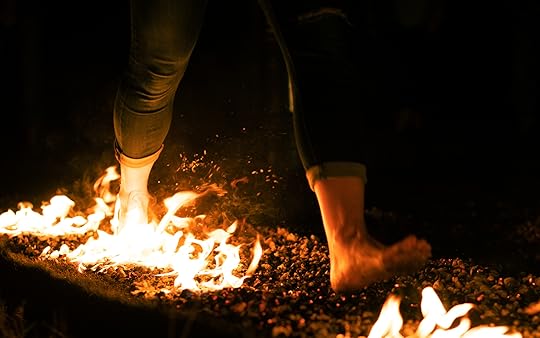
It all seemed like a good idea at the time. A firewalk to raise money for our school. What I didn’t know at the time was just how far and deep I would have to reach inside to achieve it.
Fire kisses.
That’s what they’re called… tiny little marks, where the red hot embers made contact with the bare soles of the feet.
Marks of an adventure, a challenge met, a fear faced head on, when terror raises it’s fierce head…
“We’re going to organise a Firewalk for the school to raise funds… would you like to do it? Walk across the coals? Chris has ran this event lots of times, he’s a trained Firewalker!”
Lucia (Mum of Jack, Class One) looked at me as she posed this question.
My initial reaction was one genuine excitement – I mean, what an AMAZING fundraiser that would be? Something totally different – this was going to put us on the map!
“So would you? What do you think? There’s no pressure.”
Ohhh.. I think I WOULD like to have a go…
“How does it work? I mean, how do you not burn??”

Lucia’s reply was a brief explanation, but the words ‘you must walk with purpose’ hung in the air. I would have to ‘walk with purpose’.
“Ah. Maybe not – I can barely walk down the road with purpose!”
The day before the walk, Lucia again asked if I would like to join the Firewalkers for the training. ‘Then you could do it too if you feel like it, on the night?’
I laughed – I’d love to, but with a limp due to hip dysplasia and carrying some *ahem* ‘extra’ weight, I did not want to be that idiot that fell over whilst trying to ‘walk with purpose’, needing some serious First Aid and ruining the evening for everyone.
“Maybe…I’d love to, but…”
But.

The day came. I entered the hall to see 29 people sat on chairs, facing Lucia’s partner, Chris Jones. I’d said hello to Chris a few times, had a little chat. But boy… I was not expecting this…
There was huge silence in the room, all attention was totally focussed on Chris. It turns out that Chris Jones, Film Director, Author, Firewalk Trainer, Dad, partner to the lovely Lucia, had huge energy, huge charisma, and all of a sudden the journey began.
This is where it gets hard to describe… We listened. Music was played. We watched. We talked. We hugged. We shouted. We yelled. We laughed – a lot! We danced… Boy did we dance!! Feeling uncomfortable reading this?! Yeah, we were too – at the beginning!
Inhibitions lifted, and the energy began to make the room buzz.
Chris is a powerful speaker, a motivator and he knows his stuff. He knew how to get us all more and more out of our comfort zone, with people that we knew and we didn’t know. It felt like we were on a journey that would, without a doubt, take us somewhere that most of us hadn’t been before.
He began using visulisation, a powerful tool that uses the power of your mind. We had to all choose something to focus on, something big or small, something that was holding us back from doing the things that we really wanted, really needed to do in life. And then Chris through in a curve ball – “Now you’re going to walk on broken glass.”
 Holy moly.
Holy moly.
Real glass, from wine bottles. My favourite kind of glass. And now I was going to walk on them? With this body? Surely my weight alone would cause me to lacerate my feet? The terror, the utter terror must have shown on my face…
“Claire! Would you like to go first?”
Yikes. In for a penny…
And do you know what? Terror showed up, right there. My hands were sweating, my feet were sweating… I nearly got the giggles (my default in a scary situation, believe it or not!)
“You’ve got this!” whispered Lucia in my ear… Chris offered his arm, which I took, just to balance myself. I took a deep breath. Focussed. Put on my big girl pants (Metaphorically. I already had my big girl pants on).
But do you know what? It felt AMAZING! It almost felt nice…is that possible? And as soon as I reached the other end, the roar, the cheers, and the support from my friends old and new in the room… it nearly made me cry! Every single person walked across the glass, with no injury… our confidence and belief soared!
I could go on (even more than I already have!) – but suffice to say, Chris had us all reaching inside for our inner Wonder Woman (did I mention that most of the people on this course were women?!). When it was time to light the fire, Gwen, a friend and parent, asked me the question… ‘Are you going to Firewalk?’
“Too bloody right!”
I am not entirely sure who was more surprised…
The Firewalk itself. 1,600 degrees. Hot coals. Not a thick crust to protect our feet with embers underneath. No. Freshly raked hot coals. Hot enough to cook steak. Hot enough to melt lead. Hot enough to BURN OUR BLOODY FEET!
I want to tell you how it felt. I want to tell you about the commitment, the self belief, the power of the mind, the support of our Firewalker comrades. The leadership from Chris. The quiet, unassuming support and strength from Lucia. The feeling, oh the feeling of DOING it! Not falling down, not worrying about limping, forgetting the pain in my hip… for some, forgetting the mental anguish that faced them right there, in front of the coals…
I can try… I can try and tell you what it meant for me. It’s personal, for everyone. No one, but no one knows what goes through other peoples minds.
The hardest part for me, was when we had to focus in on our fears… what was holding me back? To start with, I thought that there was nothing. Truly – I’m confident, right? Right! My life seems to be going the way I want and need it to be, yes? Yes, more or less!
So what is it? What is my fear? What IS holding me back – because we all have something.
I’m lucky to have the support of a wonderful family, a stable and happy upbringing. A fantastic husband, who loves me, and I him. Amazing kids. So surely there is something?
I need to be the best parent that I can be.
I need to be present and positive.
I need to be supportive and understanding.
I need to be well.
I need to be healthier.
I need to be mobile and active and mindful so that I can be present at all times.
I need to be pain free. Oh to be able to walk, pain free!
To visualise my future was frankly terrifying and deeply upsetting. So upsetting, that I stood rigid in that hall, with my eyes squeezed tightly shut. But not tight enough to stop the tears from rolling down my cheeks. In my mind, I was scared to see what I was looking at, at my future…
Then Chris started to draw us back, to start to focus how different things would be WITHOUT these fears, these feelings, these things that hold us back.
We began to visulise a different future without these restraints. And I smiled! My tears dried up, and I began to see what could be, what was possible, if I let go of my restrictions that I had placed on myself.
And so I was ready. Ready to face my fear.
I was full of adrenaline, full of excitement at the prospect of pushing my limits – I really began to believe that I could do this, this Firewalk. I could override any pain, any fear… I could do this…
And do you know what? I bloody well DID IT!
It was utterly amazing…
I watched Lucie, wondering what fears she faced, as she strode across the glowing coals.
I watched my friend falter, and then find her inner Wonder Woman – she nailed it!
I watched another friend take a deep breath, stride across the red hot coals – and fall into Chris, sobbing.
I stood at the start of the coals, anxious… “Will I be able to walk quickly enough, Lucia?”
Quietly, positively, Lucia responded… “of course you can. You’ve got this. I believe in you”
Chris called from the end of the coals -“look at me…focus…Are you ready?”
YES!
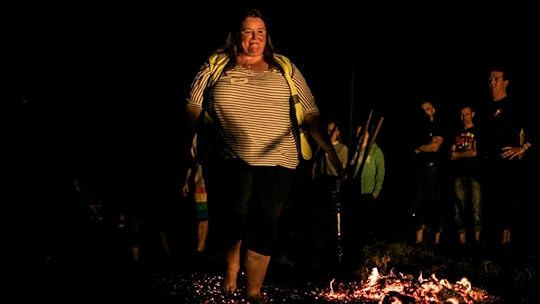
I walked once… I felt fear and then elation. I walked again – and again… with no fear this time, only determination and courage, to the cheers and support of my friends and family. I’ve got this.
So it starts here. My journey to better health, to more mobilty, to being the best that I can be for my family, and for me…it starts right here.
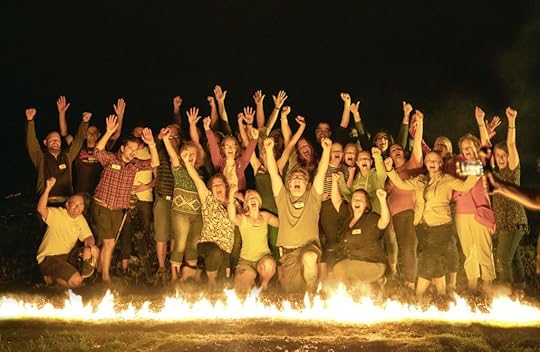
Will it work for you? You are just going to have to do it for yourself…
Come on. Put your big girl pants on, and find your inner Wonder Woman. We did.
You can still contribute to the campaign HERE.
Claire Coles Jones
Wonder Woman Firewalker
September 12, 2019
Filmmakers Screenplay Bootcamp: Ealing Studios, Get £40 off
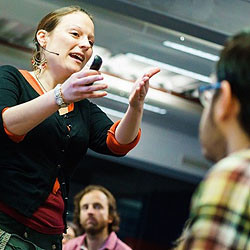
 What we fail to fix in the script, will haunt us on set, will challenge us in post and will ultimately take us down the paths of success or failure once the film is completed.
What we fail to fix in the script, will haunt us on set, will challenge us in post and will ultimately take us down the paths of success or failure once the film is completed.So let me ask, is your script the best it can be? You and I both know the answer. The question is, what will you do about it? Will you improve, fix and tighten BEFORE it’s too late, or like 90% of other indie filmmakers, will you rush to set and spend years fixing problems that were left on the page?
I have been there and got this t shirt and I highly recommend biting the bullet way before even pitching to backers.
We are running a two day Screenwriters Masterclass with screenwriter, author and multiple feature film producer Lucy V Hay at Ealing Studios on the weekend of the 19th and 20th of October.
We have created it to help YOU elevate your script and project by transforming your story, characters, structure, tone and pacing. All of which will make it more backable, pitchable and sellable. It will also attract more money, better cast and sales once completed.
And let me be SUPER clear. The transformation from good to great is in many ways simple. That does not mean it’s easy. We get so close to our creations that often it can feel like trying to find shadows with a torch.
You will learn how to rework your script and ideas so that they stand out from the tsunami of good (but not killer) scripts out there…

Key elements covered include:
• HOW to write MORE visually to create powerful images in the reader’s mind
• HOW to craft your characters so they become even more unforgettable
• HOW to write dialogue that sparkles, giving unique voices to each character
• HOW to avoid dialogue taking over your scenes
• WHICH structural methods will keep you on track and how to avoid overthinking
• HOW to spot and avoid your ‘static scenes’ and ‘false movement’ and remove forever
• WHY ‘good craft’ is NOT just screenplay formatting!
When: Sat 19th to Sun 20th October, 2019
Where: Ealing Studios, Ealing W5 5EP
Standard Ticket: £139.00 (get £40 off with the discount code SUCCESS40)
Tickets: www.screenwritingfundamentals.com
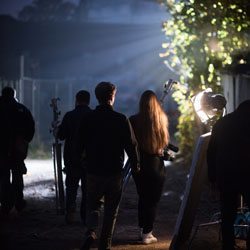 Among a mountain of other things, we will work on
Among a mountain of other things, we will work on• Unclear concepts and muddy loglines and how to rework so that they crackle
• How the first ten pages can work FOR you – or AGAINST you
• How to overcome expositional issues and backstory problems so your story flows effortlessly
• How to spot and eliminate pace killing scenes that feel essential but can be reworked or cut
• How to inject new life into character role functions that feel samey or generic
• How to clarify genre conventions that may feel confused or stale in your story
• How to rewrite scene descriptions that feel overwritten or overly prescriptive
• Zing it up and kill boring chains of dialogue
• How to leverage often maligned devices like flashback, montage, dream sequence – they can be used to great effect
When: Sat 19th to Sun 20th October, 2019
Where: Ealing Studios, Ealing W5 5EP
Standard Ticket: £139.00 (get £40 off with the discount code SUCCESS40)
Tickets: www.screenwritingfundamentals.com
Looking forward to seeing you there… and remember that discount code to get £40 off for the next ten sign ups.
Chris Jones
www.screenwritingfundamentals.com
September 2, 2019
Chernobyl: An acoustic masterclass in storytelling by Hildur Guðnadóttir


It’s an astonishing story so brilliantly and chillingly written by Craig Mazin. The pace, the casting, the direction, the design, the cinematography ALL work in concert to create this unforgettable experience.
But the soundtrack, the music score and the fusion it creates with the soundscape, stand out for me.
Immediately evocative, the score by Hildur Guðnadóttir for me actually sounds like the events it depicts. Metallic. Deathly. Haunted. Irradiated. Death.
As a filmmaker it reminds me that every aspect of the production should feed from the same source, the same vision… That creative laser focus has paid dividends, and it’s a credit to all those who controlled the creative choices to allow such audacious choices across the whole production. I wrote before about the value of using a few key words through which to filter all creative choices.
What can we learn? Tone. Depth. Feel. Atmosphere. Authenticity. Most of all thought, creative courage.
Listen to the score below a few times. It will haunt you and inspire you to create from a more authentic and creative place. I know it does me.
Onwards and upwards!
Chris Jones
My movies www.LivingSpiritGroup.com
My Facebook www.Facebook.com/ChrisJonesFilmmaker
My Twitter @LivingSpiritPix
Sign up to my mailing list for updates on events, books and free film making tools
July 11, 2019
Short guide to film insurance
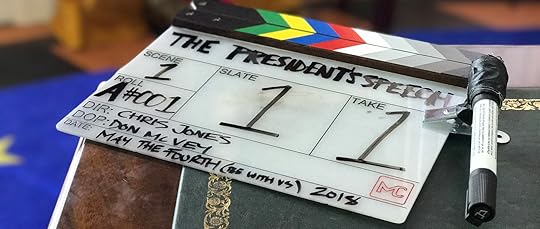

Film insurance is always a quesiton I get asked about – how muhc, where from, what kind of cover… So I asked the lovely people at Performance Media and Film a few basic questions for indie filmmakers.
Q – What are the different types of insurance needed for low budget films?
A – You can cover many things for low budget films, the main things that people cover would be Equipment (Own or Hired), Public Liability and Employers Liability. You can then also cover Business Travel and Production Insurance (Producers Indemnity and Multimedia) which would cover any extra expenses for delays, cancellation and abandonment of the Film and damage to any footage before being backed up.
Q – Can I take out annual insurance that covers multiple shoots? How does that work?
A – Yes you can, a policy with us can work however you want it to, we cater our policies to suit each individual clients requirement, we understand how hard it is to gauge the upcoming year so we would ask for estimates for the forthcoming year on things like Freelance payments and annual Production Spend including Spend on Hiring Equipment, this can always be topped up throughout the year if you get more work than originally estimated.
Q – What is loss of hire insurance?
A – When you Hire Equipment from a 3rd party Equipment Hire Company they obviously make it your responsibility to insure the equipment whilst on hire, if when you hire the equipment it gets lost, damaged or stolen under the Hire Agreement you are responsible to pay for the hire costs until the items are repaired or replaced, this would fall under Loss of Hire cover, we give £100,000 as standard under our policies and do not limit it to 13 weeks lie others may do.
Q – Do I need to undertake risk assessments and have a first aider on the team?
A – Not unless you are carrying out a high risk scenes or stunts etc.. however it is good practice to carry out Risk Assessments for each Film, with stunts, pyrotechnics etc.. you should also seek 3rd parties who are trained in such higher risk activities who will then carry the relevant insurance and take the Liability of any claim falling due to this activity away from you, most standard policies will exclude losses occurring from any stunts, heat, fire and explosives etc..
[powr-banner-slider id=cfef3677_1546443649]
Q – How can I get a quote fast?
A – You can purchase a policy within around 10 minutes from start to finish via our quote and busy system online for single Production cover https://www.astonlark.com/performance... providing the cover is no longer than 90 days in duration, although Post Production extensions are also available, we always however recommend to call the office to speak to one of the team who can then advise you accordingly.
Q – What is the bare minimum insurance needed to stay safe?
A – To stay safe we would always recommend at least Employers and Public Liability cover, however when hiring Equipment the rental house will state you need to insure the Equipment whilst on hire, so you would require Hired Equipment also. If you are a Limited company when engaging in others to assist, whether paid or unpaid, it would become a LEGAL requirement to have Employers Liability cover for this period of engagement, there are no other legal requirements on insurance covers.
Onwards and upwards!
Chris Jones
My movies www.LivingSpiritGroup.com
My Facebook www.Facebook.com/ChrisJonesFilmmaker
My Twitter @LivingSpiritPix
Sign up to my mailing list for updates on events, books and free film making tools
May 13, 2019
Making ‘The Numbers’… A Zero Budget Supernatural Thriller now on Amazon Prime by Andrew Elias
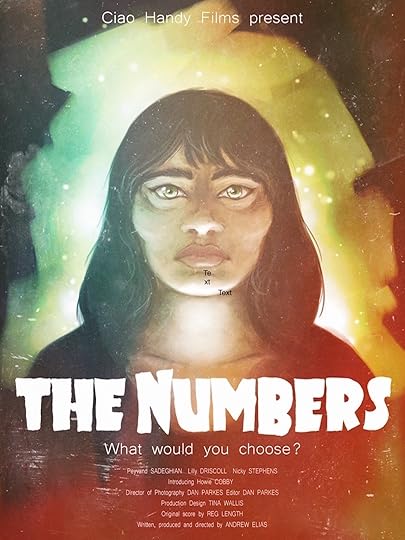
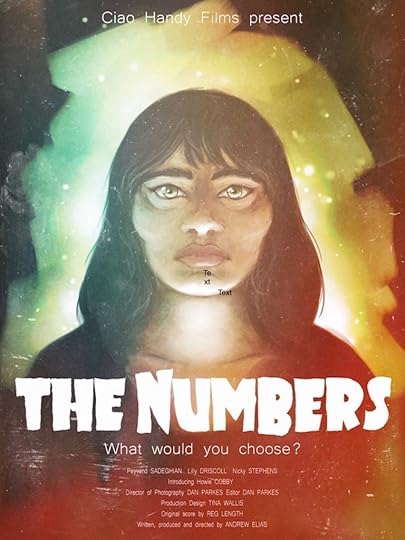 The Numbers is a supernatural thriller inspired in part by TV shows from the 1970s such as Tales of the Unexpected, and the Amicus and Hammer films of the 1960s and 1970s. It originally started life as a short film script, but as I was doing a re-write, I thought that I could add at least two more stories that I had written as shorts and make a portmanteau film with a common theme linking the stories. Once I had written the new screenplay with the two new stories included and realised that it was now a feature-length project, I contacted professional friends and asked them if they would be interested in getting involved. Thankfully, everyone was onboard, so I went ahead and booked the first location, a local bookshop. At this point, I knew there was no turning back, and that the film had to be made.
The Numbers is a supernatural thriller inspired in part by TV shows from the 1970s such as Tales of the Unexpected, and the Amicus and Hammer films of the 1960s and 1970s. It originally started life as a short film script, but as I was doing a re-write, I thought that I could add at least two more stories that I had written as shorts and make a portmanteau film with a common theme linking the stories. Once I had written the new screenplay with the two new stories included and realised that it was now a feature-length project, I contacted professional friends and asked them if they would be interested in getting involved. Thankfully, everyone was onboard, so I went ahead and booked the first location, a local bookshop. At this point, I knew there was no turning back, and that the film had to be made.
As well as the bookshop, I decided to use all local locations, with a mind to save time and money. The biggest lesson that I probably learned whilst making The Numbers was that it is incredibly hard to be both director and producer. With my director’s head, I wanted the scenes to be perfect, but my producer’s head was worrying about running over, or out of, time. Another bizarre decision that I made, was to shoot a day, then leave a four to six week gap until the next shoot day. This was partly due to me working full time as a school teacher at the time, so I scheduled shoot days in school holidays. I thought that leaving such a gap between shoot days may cause havoc with continuity, but as the film comprised of three stories in three different time periods (four, if you include the prologue and epilogue), we managed to not have too many issues. The time between shoot days gave plenty of time for reflection and improvements, but I don’t think I would shoot that way again.
Shooting scenes in different time periods also had it’s own challenges. The first shoot day in the bookshop was set in 1983, and fortunately the bookshop was stocked with plenty of antiquarian and vintage books, and didn’t have any thing that looked post 1983…until we noticed the email address of the shop on a sign on the window whilst editing! We purposely didn’t go overboard with period looks, but did have some nice details such as original pound notes from the 1950s and 1980s, an original 1980s phone, and even curtains from the 1970s, all thanks to my mum and dad’s extensive collection of stuff that they couldn’t bear to part with. Lilly Driscoll, the actor who played Millie in the 1950s story, brought her own, original 1950s costume and accessories, and Tina Wallis, our production designer, had chairs upholstered in original 1970s fabric, and made a 1950s uniform for Jess Collett, who played a tea room waitress, the night before the tea room shoot.
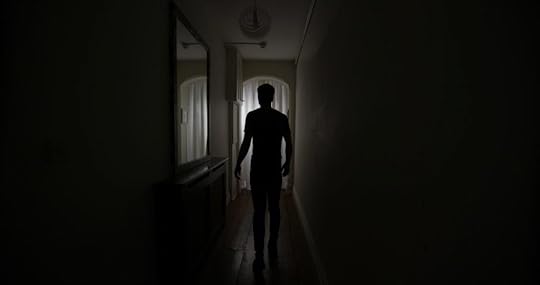
It was really important to have a strong core team to work with, and I was very fortunate to have Dan Parkes onboard as DOP/Editor/VFX wizard. Both Dan and Tina were our core crew on all shoot days, whilst we had other crew members on various shoot days that weren’t involved for the whole shoot, but all worked brilliantly within the team. On most shoot days there were no more than 5 or 6 cast or crew members, which meant that catering was home-cooked meals, or in the case of the restaurant shoot, Latin American food. I had worked with all of the actors before, apart from Jess, on various projects, so I already had a relationship with them, which I hope helped them trust me and the project. However, one of make-up artists Saffron, did think that she may have been turning up to a porn shoot as we were filming that day in my flat, and I had been quite vague with the details of what was required.
[powr-banner-slider id=cfef3677_1546443649]
At about midway through the shoot, my faith started to falter a bit, and I felt as if we would never complete the film. What I found really useful was, like on the first shoot day, to set firm deadlines. Before we had even reached the last shoot day, I hired a cinema in Worthing for a premiere screening. With that deadline, we had to absolutely complete the film or risk financial loss.. Thanks to the efforts of Dan and our excellent composer Reg Length (who is based in Norfolk, so involved a lot of sending files back and forth), we competed the film on time for the screening, although we actually sneaked in a couple of drone shots for the opening scene of the film just two weeks before.
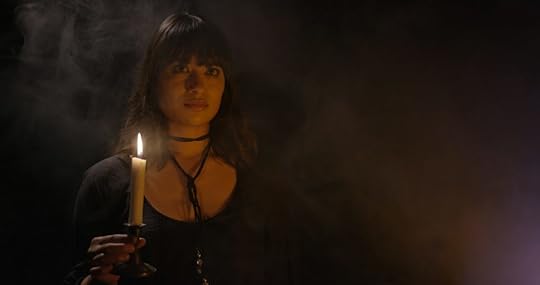
I had planned to release the film on a variety of Video on Demand platforms a month after the screening, but I was diagnosed with an aggressive tumour in my neck shortly after the screening which put me out of action for several months. I did manage to submit the film to a couple of film festivals before my operation, and we picked up two awards; one for Best Thriller, and one for Best Original Score by Reg Length. By March 2019 I had made a good enough recovery to look into uploading the film to Amazon, which was a very simple process, and The Numbers went live on Amazon on the 15th March.
Andrew Elias
May 7, 2019
So you wanna make a Sci-Fi? On a lower budget? By Martin Gooch
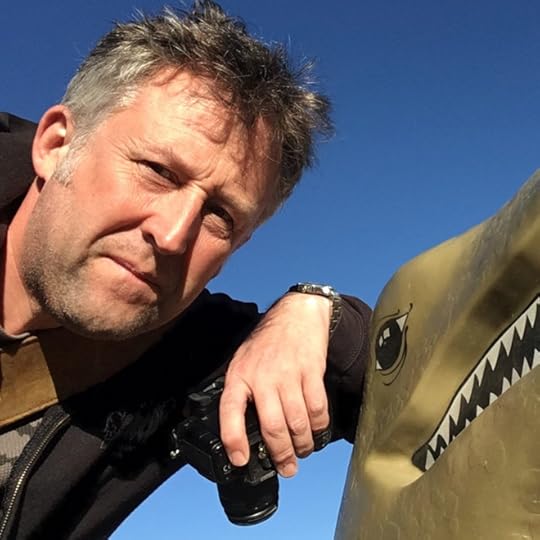
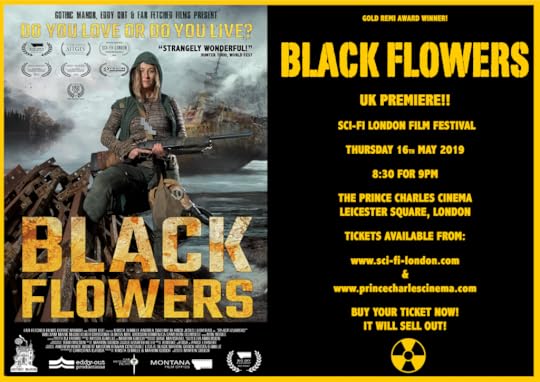
Martin Gooch is a VERY old friend of mine, and his latest SciFi movie is premiering in London as part of SciFi London. He will be there to answer questions and you can get tickets HERE. I asked him to share his thoughts on making low budget SciFi as his experience and wisdom is gold dust. Over to Gooch…
There are a thousand books and articles on directing and making short films, and a whole load on making sci-fi shorts and low budget feature films, but how many of them are actually written by film makers who have actually made sci-fi?
Well this one for start and also another one I wrote in dimension 37b (which is written in 4 dimensions) But, we’ll come to that earlier, or maybe later.
Sci Fi is a hugely popular genre, Now the Avengers have gone into space so many of the top 100 movies of all time and box office are sci-fi (Star Wars obvs) or have sci-fi roots. (Eg: ET).
Generally when we think of Sci-Fi we immediately think it is going to be expensive, huge CGI sections, VFX, SFX and epic battles etc. I have been in pitches with Producers and sales agents where as soon as I say the word Sci-Fi their faces fall and they simply think: Too expensive.
The simple fact is that we as film makers cannot complete with the studios in terms of quality and money, they just have such bigger budgets there is no way we can make a $100Million movie on $150K (or less).
But we still love sci-fi and we still want to make sci-fi films so here are some tips on how to make totally cosmic low budget sci-fi films.
1) The beginning
Question: what do the following films all have in common: Alien, Star Wars, The Terminator, Brazil and Bill and Ted’s excellent Adventure? It’s not the director, it’s not the cast, it’s not the setting or the location or even the budget. They are all awesome sci-fi because they all have an excellent kick ass script. It’s the script it’s always the script. Script, script, script. And their scripts fit their budgets. There are no scenes where you watch the film and think – they couldn’t really afford to do that, or that scene is a bit dodgy.
Your script needs to be A1, write it, re-write it, read it out loads, gets some actors in to do a table read (always good fun) and you will learn so much from hearing your script read out load, you’ll notice repetition, which can be cut, and you’ll notice the dull bits which need to be spiced up, and the missing bits which need to be added. You’ll hear when chunks of dialogue are too long and see when a character is hanging around for ages unused.
2) If you think about the Theatre there is the foreground and the background. Film (and TV) is the same. The foreground is the actors, wardrobe and props, and the background, the location, the world and the VFX/CGI/SFX.
With a big Hollywood production it’s all about the background, the huge CGI scenes, the cosmic battles, the massive expensive shots, the space stations and the robots and what-nots. That’s lovely, but very expensive or very time consuming to do. Look at the credits on any Hollywood sci-fi and see how many people work in the various GCI departments.
But you can’t afford that expensive background so focus on… The foreground.
2) Foreground VS Background
Have you ever come away from an expensive Hollywood movie and just felt that you saw an epic adventure but felt no emotional connection with the characters and actors? Well that was because the film makers were concentrating on the Background and we were lost in a world of CGI and SFX. This is what happened on Mortal Engines, John Carter (on Mars) and Jupiter Rising (looks amazing, couldn’t care less what happened to any characters) and why ET works: we really want Elliot and ET to win. Foreground. I’ll say it again: Foreground.
3) Foreground has three elements:
A) Cast/Actors. Always get the best actors you can get. I know people are always banging on about using ‘real’ people and keeping it real, but honestly trained and experienced actors will bring more to your set and they will also be aware of stage craft, which will help your continuity no end, and they will hopefully turn up on time and know their lines, which is the basic of all actors and what I expect when they walk on set.
B1) Wardrobe. Wardrobe is SO important and on low budget films almost always ignored or overlooked. A good costume will tell you so much about a character and can even become iconic, think Star Wars or even The Tin Man from The Wizard of OZ, the whole world of Cosplay is based entirely on wardrobe. Think of Alien: Every character has only one set of clothing in the whole film, but The Engineers are a bit grubbier, one wears a Hawaiian shirt and the Science Officer Ash is a bit more pressed and tidy, and Captin Dallas wears a Capt’s cap and that’s it. They even have their names on their uniforms and Nostromo T-shirts: Brilliant!!
B2) Make UP, often part of the Wardrobe team on low budget and also very important. A talented make up designer will bring your characters to life and also make great suggestions. In my last film Black Flowers I hadn’t; though about hair styles for my characters at all, and my designer came up with all sorts of post apocalyptic tribal looks which were awesome. Remember good make up takes time, so schedule that in to the morning of your shoot.
C) In low budget films the art department is always one of the first to suffer or even go. But this is a terrible error. To create that willing suspension of disbelief that you need to convince an audience of your story you need good props and great art department. A good art department will even save you money but creating wonderful things you’ll want to focus on, so you can stick the rest of your set in the background where it belongs. Give the art department time to prepare, if they can have a week to make and collect props things will only be better. Lord of The Rings spent two years in pre-production and looks fantastic as a result. The art department also tend to have the best parties, so make sure you have them on your crew.
Foreground is where you emotionally connect with the cast and characters get it right and the audience will care what happens to them.
If your foreground is interesting enough then your background is almost irrelevant. I have filmed whole scenes where the background is just one lamp pointing at the camera with the actors in the foreground creating awesome silhouettes and looking very sci-fi.
4) Technical stuff
a) Cameras. These days almost everyone has a high def camera that records sound in their pocket. Whole feature films have been shot on an Iphone and screened in the cinema. You quite simply do not need a huge Arri Alexa with prime lenses to shoot your low budget film, yes it is cool, and will look awesome in your Behind The Scenes photos with you standing next to the camera doing the ’director pointing shot’ but you just don’t need it. The truth is that no one actually cares what a movie is shot on as long as it LOOKS COOL (see foreground above). In all my years filming 26 years of it, the only people who ask me what something was shot on are filmmakers at a Q and A, sales agents, actors and most crew don’t care and the audience certainly don’t care. Just shoot on the camera that means you can still afford to spend money on Art department and everything else. Technically you must shoot at least 1920 x 1080, or possibly 2K. But if you shoot 4K (or more) it will drastically slow down your editing process as not only will the files take up a huge amount of speace (four times as much as normal HD) you’ll have to make a proxy file for each shot and then re-conform them once you have finished. All very tedious. There are a thousand films out there that never got finished as they are stuck in hellish post as they shot too much (or not enough) and can’t get the film finished.
b) Sound. Good sound is essential. Try to film in locations that are quiet, get a proper sound recordist in and then be prepared to re-record everything again later on in ADR. Good sound is expensive, but essential. People will turn off and festivals will not program a film simply because the sound is bad. Don’t forget there is On set sound recording (Sync sound), foley (made up sound) Sound design (Made up sound to emphasize emotion and atmosphere) Post re-recording (Re-recoding the sound that was rubbish on set) and of course music and score. (Music is music and score is written for the film). All of this needs to be mixed and a good mixer will elevate your film 100%. There is a reason Radio is popular but there is no silent moving picture medium.
c) Lighting. A lot of directors leave lighting to the DOP and the Gaffer and don’t offer up much thought, but lighting in many ways defines a genre and defines a films look. As a director all my films have colour themes, we are after all ‘painting with light’ on a huge canvass, so should consider the overall aesthetic as well as the performance, composition, tone and blocking and everything else. Working out how you are going to light a scene and where the lights are going to go will save you valuable time (sometimes hours) if you can find a place for the lights to go which you can shoot around and means you don’t have to re-light. The gaffers and sparks will also appreciate it.
If you are filming in the middle of a wood or a long way from an electrical source then you will probably still need lights, especially if filming at night, and for this you’ll need a generator (probably petrol driven) generators are heavy and make a lot of noise. If you are filming with a generator you’ll probably need to fix the sound later.
These days many people say that ‘This camera has a twelve stop dynamic range and I don’t need to light anything.” When they say this what they mean is they don’t actually understand cinema at all. The dynamic range just means how well it can see in the dark and still get a good exposure which isn’t all grainy when looked at later. But lighting will raise your film from looking OK or Rubbish to amazing. Lighting is why Hollywood movies look like Hollywood movies and low budget student films look like student films.
Lighting can create mood, enhance a performance, and even influence your directional decisions when you see a certain part of the set now looks so awesome that you want to film there instead.
5) Other stuff
Smoke machine. The single most useful additional piece of kit is a smoke machine. There are Hazers, which gradually fill a room with a haze and give Ridley Scott his beautiful wide shots in his films where cathedral style heavenly beams of light drift in from above. A big smoke machine is essential if filming outside and you want to create any sort of atmosphere at all. You can hire a hand held smoke machine, which is like the flamethrower from Alien, but throws smoke instead. This is also great fun to use. Find someone on your set who likes stuff like that and give them the smoke thrower to use all day, they’ll love it and your film will look so much more expensive.
6) shooting
There are many people who have doen a 48 hour film challenge film and made a great short (Ive done 4!) but on the hwole it’s best to give yourself as much time as you can. The ‘sweet spot’ for shooting it 6 pages a day. Any more than that and it’s really tough. Less is better and on a big film (Eg: harry Potter we did about 1-1.5 minuets a day!) The more time you have the beter it will look (on the whole).
If you want to make a ten minute film, two long days is better than 1 horrifically long day, but two weekends will be even better and you’ll have more fun, and more footage to edit.
7) To CGI or Not To CGI.
Everyone now has seen everything. Spaceships, monsters, dragons attaching a WW2 bomber, dinosaurs wandering around, see it done it. This means the public are somewhat jaded about CGI, but what it also means is that they have all seen it at it’s highest possible standard, where millions of dollars have been spent on a single shot and a thousand people have worked on it for year. They will spot bad CGI immediately and it will kick them out of the film. If you can’t afford good CGI then work out a way round it. It if far better to just have 1 awesome CGI shot in your entire film than 20 bad ones.
You may have spent a whole month doing a single shot yourself and be very pleased with your work, but is it really any good? Because the audience don’t care who did it and how long it took, they just want it to look cool. Avoid bad CGI and try to get things done in camera when you shoot it.
8) The edit.
Edits are brutal. My advice: once you have finished your shoot, watch all the rushes and then leave it for a day or two (or even a week) and then start editing. It’s important to distance yourself from your emotional connection to the shoot and just look at the rushes. Even if you had to get up at 4am and stand in a muddy field for 12 hours to get a shot no one cares!! What matters is: does the shot work in the film? If not cut it.
Only vary rarely does anyone come out of a film and say that was too short. But they often come out and say – that was too long. If it doesn’t work cut it. In my third movie we cut the whole B-story which meant one brilliant actor was cut from the whole film.
This was a script fault and if we had nailed the script at the beginning I wouldn’t have had to phone that actor and told them they’d been cut. A horrible call to have to make.
Always give yourself as much time as you can have. If you rush an edit you’ll always regret it and will want to go back to your film time after time.
Once you have a reasonable edit with temporary music show it to a few people and get feedback, if everyone says scene two needs work, then do the work, no one apart from you knows the back story. Make sure titles and credits are polished and high quality and check all the spellings a dozen times. Nothing worse than seeing a spelling mistake on the big screen at the premiere.
9) The End
Remember the best films are about people (IMHO), and what we emotionally engage with is interesting people doing interesting stuff. Science fiction is not all about entire worlds doing stuff and galactic wide mega things; it can just be about a Hot Tub Time Machine, or a man who is invisible. Keep it simple, and remember, Act 1, Act 2 and the twist. What makes your film different from all the other ones?
Science fiction also known as speculative fiction can be simple, Hollywood have all the money and time and CGI, we have all the creativity and imagination, and purity of direction, use that freedom to experiment and remember necessity is the mother of invention and go and watch Dark Star: John Carpenters ‘student’ film, and see what he did with no CGI, no SFX and hardly any money.
10) Over and out
Being a director can be physically hard, long days on set, working weekends and holidays, I am always the first on set, I like to sit there and think and walk through the action without the actors and work out where I am putting the camera (if I haven’t already with storyboards, shot lists and camera plans) what lenses and what grip kit is required, whilst everyone is getting ready and so as soon as the actors arrive on set I know what I want to do with them and how I am going to block the scene (and where the tea is).
But for me there is no greater sense of accomplishment than completing a movie and showing it in a cinema to an appreciative audience.
I hope my suggestions help you make a better movie!
Happy Shooting!
Tickets on sale for the UK premiere of my 4th feature film: Black Flowers on 16th May from The Prince Charles Website here:
https://sci-fi-london.com/production/black-flowers/
 Martin Gooch: At 19 Martin went to Modoc County California USA to work for the US Forest Service, which gave him a love of the outdoors and a passion for new worlds. Martin then spent 15 years in the camera department on films like Judge Dredd, Harry Potter, James Bond: Goldeneye and The Muppets as a 2nd and 1st AC (Assistant Cameraman), more than 1000 days on set as a training ground before becoming an award winning writer and director in his own right. Martin has since made more than 20 short films and directed Doctors (BBC), Hollyoaks (C4) and Spooks Interactive, which won a BAFTA and was nominated for an EMMY.
Martin Gooch: At 19 Martin went to Modoc County California USA to work for the US Forest Service, which gave him a love of the outdoors and a passion for new worlds. Martin then spent 15 years in the camera department on films like Judge Dredd, Harry Potter, James Bond: Goldeneye and The Muppets as a 2nd and 1st AC (Assistant Cameraman), more than 1000 days on set as a training ground before becoming an award winning writer and director in his own right. Martin has since made more than 20 short films and directed Doctors (BBC), Hollyoaks (C4) and Spooks Interactive, which won a BAFTA and was nominated for an EMMY.
He wrote/produced/directed his first feature film Death (2012) starring Paul Freeman (Raiders of The Lost Ark) and legendary British actor Leslie Phillips, then directed The Search for Simon, (2013). Lionsgate has, just released his third feature film The Gatehouse, a gothic fantasy, in the UK. His first 3 movies have won or been nominated for 44 awards including numerous Best Director and Best Film awards.
His fourth feature film the female led post-apocalyptic sci-fi Black Flowers had its world premier at the Sitges International Film festival and will be released internationally in 2019. Martin has a master’s degree in screenwriting from the University of the Arts (London). He has spent his life making films and wishes to continue to do so.
IMDB:



